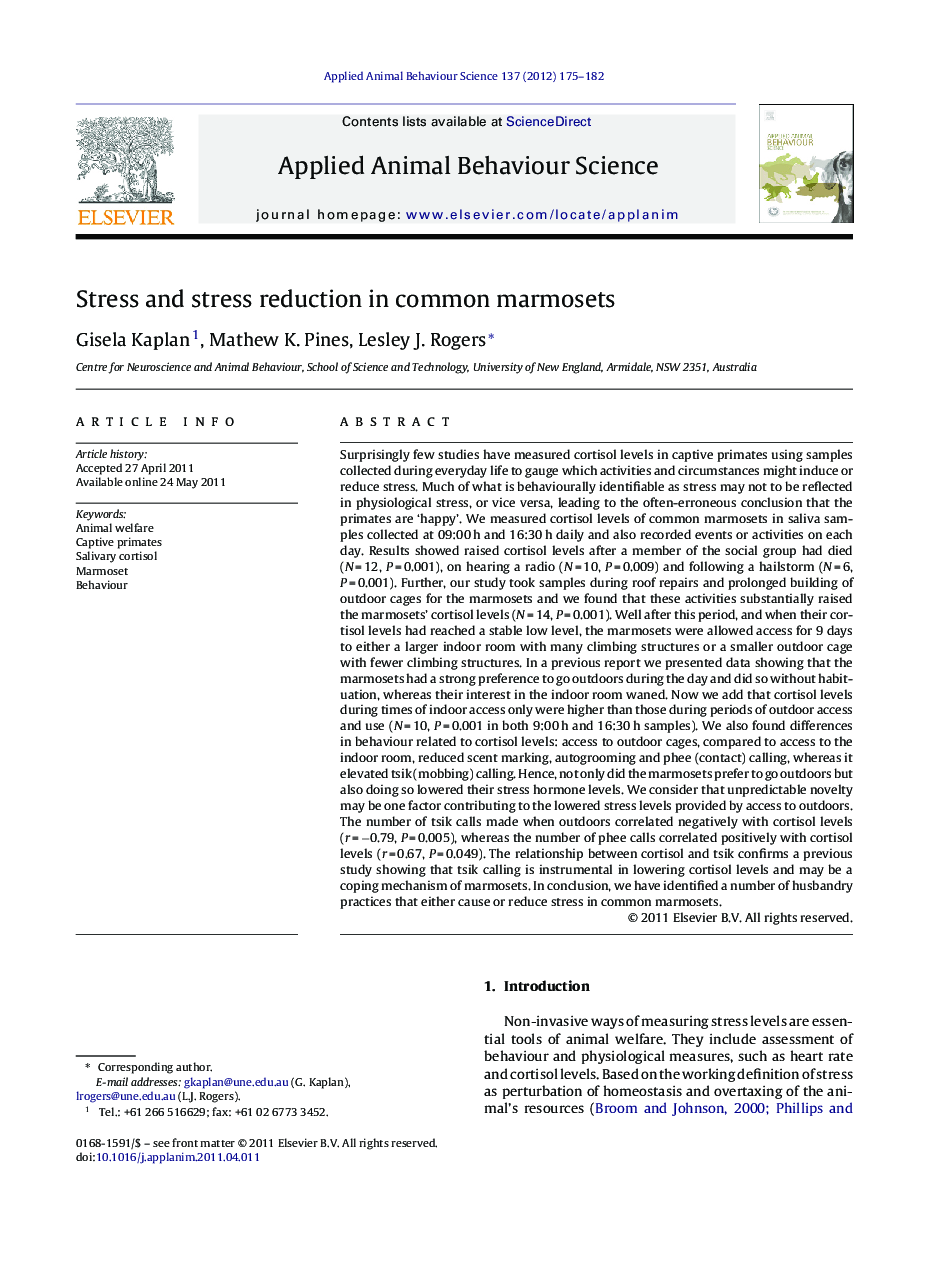| Article ID | Journal | Published Year | Pages | File Type |
|---|---|---|---|---|
| 4522972 | Applied Animal Behaviour Science | 2012 | 8 Pages |
Surprisingly few studies have measured cortisol levels in captive primates using samples collected during everyday life to gauge which activities and circumstances might induce or reduce stress. Much of what is behaviourally identifiable as stress may not to be reflected in physiological stress, or vice versa, leading to the often-erroneous conclusion that the primates are ‘happy’. We measured cortisol levels of common marmosets in saliva samples collected at 09:00 h and 16:30 h daily and also recorded events or activities on each day. Results showed raised cortisol levels after a member of the social group had died (N = 12, P = 0.001), on hearing a radio (N = 10, P = 0.009) and following a hailstorm (N = 6, P = 0.001). Further, our study took samples during roof repairs and prolonged building of outdoor cages for the marmosets and we found that these activities substantially raised the marmosets’ cortisol levels (N = 14, P = 0.001). Well after this period, and when their cortisol levels had reached a stable low level, the marmosets were allowed access for 9 days to either a larger indoor room with many climbing structures or a smaller outdoor cage with fewer climbing structures. In a previous report we presented data showing that the marmosets had a strong preference to go outdoors during the day and did so without habituation, whereas their interest in the indoor room waned. Now we add that cortisol levels during times of indoor access only were higher than those during periods of outdoor access and use (N = 10, P = 0.001 in both 9:00 h and 16:30 h samples). We also found differences in behaviour related to cortisol levels: access to outdoor cages, compared to access to the indoor room, reduced scent marking, autogrooming and phee (contact) calling, whereas it elevated tsik (mobbing) calling. Hence, not only did the marmosets prefer to go outdoors but also doing so lowered their stress hormone levels. We consider that unpredictable novelty may be one factor contributing to the lowered stress levels provided by access to outdoors. The number of tsik calls made when outdoors correlated negatively with cortisol levels (r = −0.79, P = 0.005), whereas the number of phee calls correlated positively with cortisol levels (r = 0.67, P = 0.049). The relationship between cortisol and tsik confirms a previous study showing that tsik calling is instrumental in lowering cortisol levels and may be a coping mechanism of marmosets. In conclusion, we have identified a number of husbandry practices that either cause or reduce stress in common marmosets.
